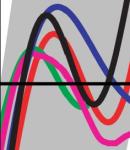 By Deep Climate
By Deep Climate
There’s been quite a stir about NCAR Senior Scientist Kevin Trenberth and his upcoming presentation at the American Meteorological Society Annual Meeting. Some of that spilled over here in a spirited discussion of Trenberth’s failure to blockquote a cited paper by Hasselmann (there has since been a new version which appears to be a sincere if hasty fix). The original controversy, though, largely centered on Trenberth’s withering attack on the climate science contrarians and his characterization of them as “deniers” and “charlatans”, which, needless to say, has caused howls of outrage throughout the contrarian blogosphere.
No one has been more outraged by Trenberth’s broadside than Steve McIntyre, who decided to bring what Judith Curry called a “historical perspective” and revisited a “climategate” controversy about “keeping papers out” of IPCC AR4. McIntyre dismissed Trenberth’s defence of Phil Jones as a “first time IPCC writing team member” as “readily demonstrated to be untrue”. McIntyre’s ironclad proof? Despite Trenberth’s claim of being an IPCC “veteran”, both Trenberth and Jones had exactly the same IPCC resume as Chapter 2 contributing authors for the Second and the Third Assessment Reports, before becoming lead authors together in AR4.
I’m sure regular Deep Climate readers will be shocked – just shocked – to find out that a closer look behind McIntyre’s selective facts tells a completely different story. Trenberth was clearly referring to experience as a lead author (contributing authors are not on the “writing team”). And both Jones and Trenberth may have been Chapter 2 contributing authors on previous IPCC reports, but Trenberth was also both a Chapter and Technical Summary Lead Author in both 1995 and 2001. So, once again, the latest “climategate” scandal proves to be yet another outright falsehood from McIntyre.


 Do you have what it takes to be a climate auditor? Try the following fun test and find out. And at the same time, you can’t help but learn something about the fine art of argumentation from charts as practiced by the master himself, Steve McIntyre, and refined in his most devoted media outlet, the U.K. based Mail on Sunday.
Do you have what it takes to be a climate auditor? Try the following fun test and find out. And at the same time, you can’t help but learn something about the fine art of argumentation from charts as practiced by the master himself, Steve McIntyre, and refined in his most devoted media outlet, the U.K. based Mail on Sunday.

